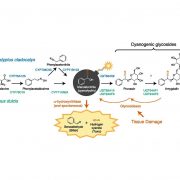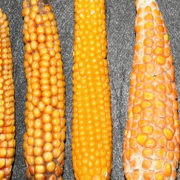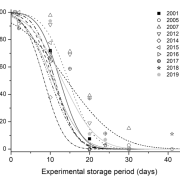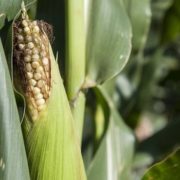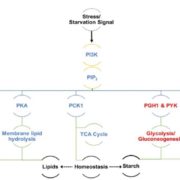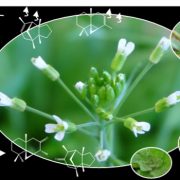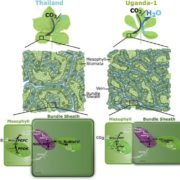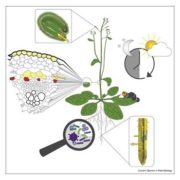C4 photosynthesis evolved in warm climates but promoted migration to cooler ones
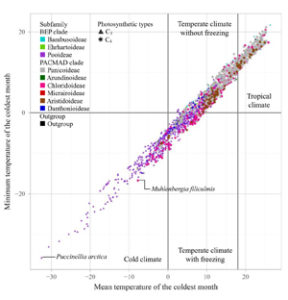 Ecol. Lett. C4 photosynthesis represents a biochemical CO2-concentrating mechanism that increases Rubisco-mediated carboxylation of RuBP and reduces photorespiration. However, there is an energy cost associated with C4 photosynthesis, and so it is presumed to become advantageous over C3 photosynthesis only when levels of photorespiration are high, such as in hot and/or dry environments. This ecological trade-off is reflected in the geographic distribution of C4 species today, with the vast majority restricted to warmer environments. Watcharamongkol et al. employed phylogenetic and distribution data to model whether C4 photosynthesis is poorly adapted to lower temperatures, or whether the evolution of C4 photosynthesis in tropical environments led to the inheritance of other characteristics that have prevented expansion into cooler niches. They found that C4 species are in fact more likely to transition from tropical to temperate climates than C3 species, suggesting that C4 plants can indeed compete in temperate environments. It is possible that advantages of C4 photosynthesis other than reducing photorespiration, such as increased nitrogen and water use efficiencies, may compensate for extra energy demand in temperate conditions. (Summary by Mike Page) Ecol. Lett. 10.1111/ele.12905
Ecol. Lett. C4 photosynthesis represents a biochemical CO2-concentrating mechanism that increases Rubisco-mediated carboxylation of RuBP and reduces photorespiration. However, there is an energy cost associated with C4 photosynthesis, and so it is presumed to become advantageous over C3 photosynthesis only when levels of photorespiration are high, such as in hot and/or dry environments. This ecological trade-off is reflected in the geographic distribution of C4 species today, with the vast majority restricted to warmer environments. Watcharamongkol et al. employed phylogenetic and distribution data to model whether C4 photosynthesis is poorly adapted to lower temperatures, or whether the evolution of C4 photosynthesis in tropical environments led to the inheritance of other characteristics that have prevented expansion into cooler niches. They found that C4 species are in fact more likely to transition from tropical to temperate climates than C3 species, suggesting that C4 plants can indeed compete in temperate environments. It is possible that advantages of C4 photosynthesis other than reducing photorespiration, such as increased nitrogen and water use efficiencies, may compensate for extra energy demand in temperate conditions. (Summary by Mike Page) Ecol. Lett. 10.1111/ele.12905


